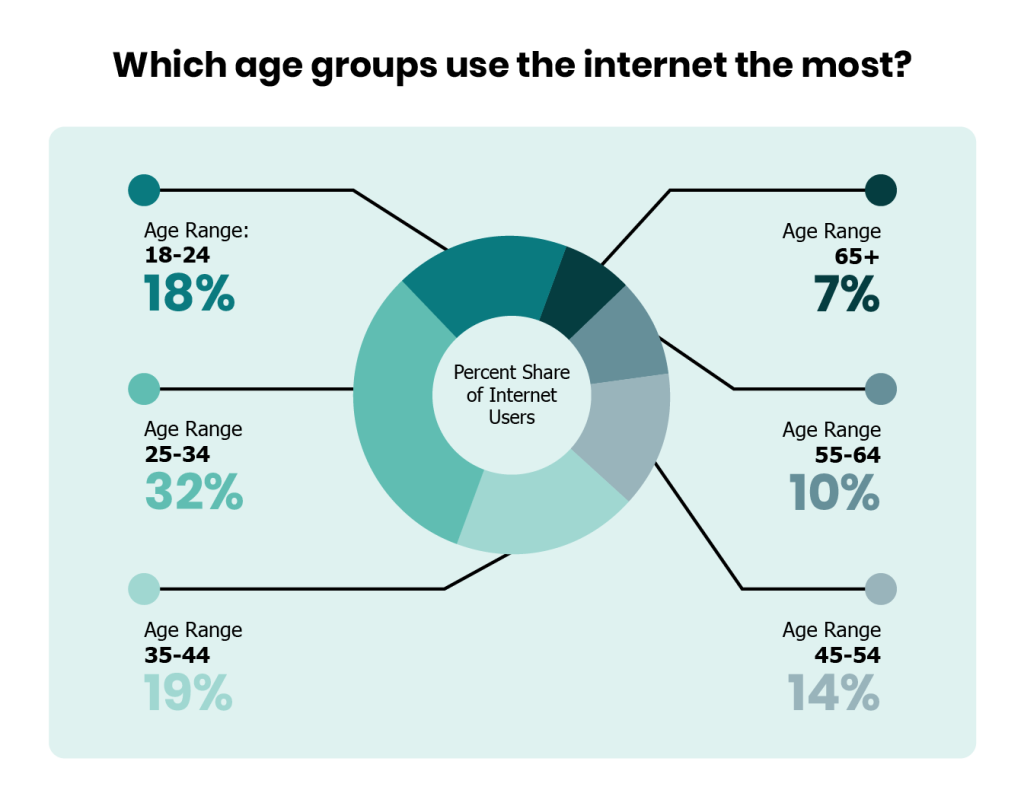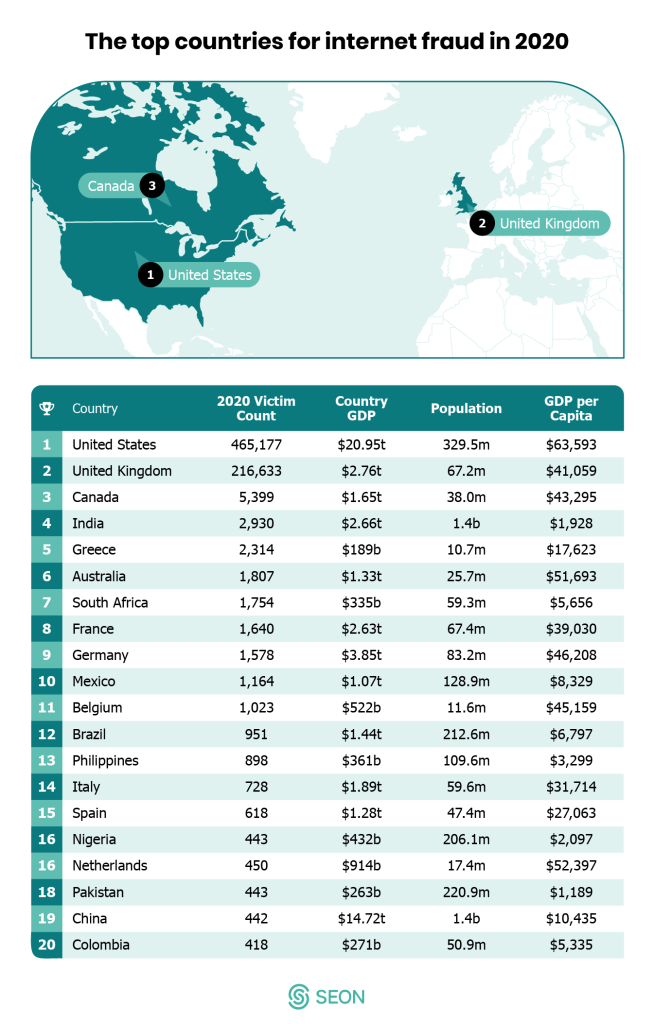Today, we’re expanding on our age group research on fraud to look at the picture on a wider, global scale.
Where in the World Is the Most Online Fraud?
Fraud is a type of crime that has plagued people and businesses for hundreds of years. However, the internet age has opened up an enormous wealth of opportunities for fraudsters looking to make a quick buck at someone else’s expense.
Now, the budding fraudster can target anyone from all over the world, if they’re an active internet user. From sending phishing emails to cloning popular ecommerce sites or even locking people out of their devices with ransomware, the modern fraudster’s arsenal is diverse and ever-evolving.
Thankfully, for every problem, there tend to be solutions. Among internet users, there is a growing awareness of the most common types of online fraud, as well as the basic security measures that we should all be implementing in order to protect ourselves.
For businesses, the threat can be a little more complex, especially for those that provide online services. In this case, advanced security measures such as data enrichment and device fingerprinting can help to protect businesses from online fraud, while also enhancing your understanding of your customer base.
We recently looked at how threat affects different generations of Americans in the Gen-Z USA fraud report. But the threat of online fraud is a global issue, so we also wanted to find out who and where in the world the most likely targets of these digital criminals are.
Here’s what we found.
Which Age Groups Use the Internet the Most?
To begin, we first wanted to find out who is using the internet the most. Here, we can see a breakdown of adult internet users by age range, highlighting which generations are the most and least active online.

The largest group of internet users are those in the 25-34 age range, accounting for 32% of users. Combined with the younger group of 18-24-year-olds, we can reveal that 50% of internet users are under 35.
This highlights the fact that young people are the most prevalent age group for online activity, though whether this makes them a larger or smaller target is unclear.
Fraudsters could target younger people as a group as there are more of them online, raising the likelihood of a successful con. However, these people are also the most familiar with the internet and have grown up in a digital world, meaning they are likely much more aware of internet security and common digital threats than many older people, on average.
The age range with the smallest proportion of internet users is the 65+ category, accounting for only 7% of the total. This could make them the smallest target for online fraudsters, as there are simply fewer potential victims in this age range.
However, these individuals are also the least familiar with the internet, having grown up in an analog society, and maybe unfamiliar with digital threats.
The Top Countries for Internet Fraud in 2020
While it may be unclear which age group is the most vulnerable to online fraud globally, we can assess the digital threats that people face by country.
Here we can see data for the number of reported victims of online fraud in 2020, with the top 20 countries being displayed.

1. United States: 2020 Victim Count: 465,177
The United States saw by far the highest number of online fraud victims in 2020, with a total of 465,177. As the largest economy in the world, the United States is also the biggest target.
The incredibly high number of victims in the country suggests that fraudsters have considered this and are targeting US citizens as a result.
2. United Kingdom: 2020 Victim Count: 216,633
In second place is the United Kingdom, which saw a total of 216,633 victims of online fraud in 2020.
While this is less than half the number of victims in the USA, the UK has a population of around 20% that of the United States, which suggests the United Kingdom has a much bigger internet fraud problem for its relative size. In other words, you were statistically more likely to be a victim of online fraud in 2020 as a UK citizen than an American.
3. Canada: 2020 Victim Count: 5,399
Canada takes third place with a 2020 victim count of 5,399. This is considerably lower than the United States or the United Kingdom, indicating that the top two countries are far ahead of any other in terms of being a target of online fraud.
Even so, Canada’s victim count is not far off, being double that of fourth-place India, which saw 2,930 fraud victims across a population of approximately 1.38 billion.
High-GDP and English-Speaking Countries Are the Most Common Targets
This data suggests that anglophone countries are the primary target of online fraudsters. All of the top three countries are predominantly English speaking, as is Australia – which took sixth place – while fourth-place India has a very large English-speaking population as well.
This is likely because English is the most widely spoken language in the world with 1.38 million speakers, making it the lingua franca of the modern fraudster.
It is also worth noting that the number of victims in these countries are ranked in the same order as their respective populations and GDPs, suggesting that fraudsters take into account the number of their potential targets as well as their overall wealth, with richer countries being the biggest target.
Interestingly, some other highly developed countries with high GDPs such as Japan and South Korea are absent from this list.
This is perhaps due to their languages being not as accessible and much less widely spoken or even studied, making them less viable targets for the international fraudster.
Methodology
We wanted to identify the biggest targets of online fraud globally. To do this, we first considered data from Statista indicating which age groups make up the majority of internet users, as this could indicate the biggest targets for fraudsters.
We then moved on to look at FBI data, revealing the 20 countries that recorded the most victims of online fraud in 2020. We then considered why the top few countries might have placed so highly, as well as why some other large countries were noticeably absent.
We also used World Bank Data to present the populations and GDP of each county, allowing us to calculate their GDP per capita, and Statista data on the number of English speakers worldwide.







